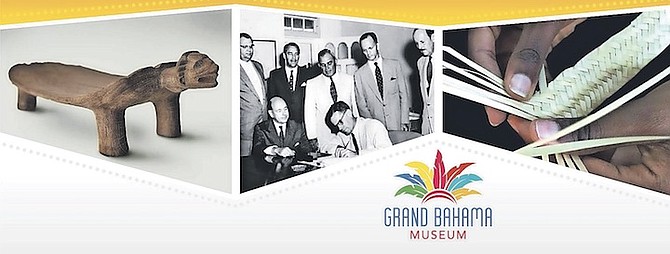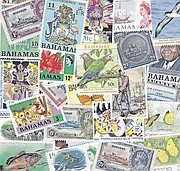BY DENISE MAYCOCK
Tribune Freeport Reporter
dmaycock@tribunemedia.net
The Groves family is continuing its philanthropic legacy in The Bahamas with the soft launch of a new digital Grand Bahama Museum – the first in the Caribbean region.
The site - www.grandbahamamuseum.org - is spearheaded by Margaret Groves - the wife of Graham Groves, whose father was the late Wallace Groves, the founder/developer of Freeport.
The Grand Bahama Museum provides the world access to explore and experience Bahamian history and culture through a digital format.
The Museum’s archives conserve and protect the Groves’ family collection of photographs, film, artefacts, magazines, books, and documents that record the development of the island of Grand Bahama.
The mission is to present the history of Grand Bahama Island, and the Bahamas in general, by documenting and digitally preserving the history and heritage of the Bahamian people in a sustainable way for future generations.
The centrepiece of the museum - “Touch My Picture – Hear My Story and Lives Lived” - contains original written and recorded personal remembrances and interviews that give voice to those who lived the history preserved in the museum’s large archive of photographs and documents.
“This has been a ten-year project,” said Mrs Groves. She found many original documents and displays saved from the first museum created at the Garden of Groves in the 1980s by her late mother-in-law Georgette Groves.
The original museum was destroyed over the years by multiple hurricanes.
Following the devastation of the island by Hurricane Dorian in 2019, Mrs Groves was even more convinced about developing and creating the Grand Bahama Museum in the digital domain.
Getting funding for a ground facility was extremely difficult, she said.
“I had looked for funding and assistance through various avenues from the Antiquities Museums and the (Grand Bahama) Port Authority etc., and I reached out to various organisations for assistance, and it just became more and more difficult to find funding for this type of on-the-ground facility. I am an interior designer, and displays cost over $200 per foot,” she explained.
Wanting to reach a wider audience was another reason for taking a virtual approach.
“The reality of GB is that tourism is way down,” said Mrs Groves, who found that most museums in international cities have a digital presence.
“We crafted it so it can be on an iPad, iPhone and computer. And what that means is that our reach is even further; we are spreading the culture of GB and The Bahamas in general worldwide, and that is a very big plus for our visitors and potential visitors,” she noted.
At one time, Mrs Groves had considered putting the museum at the library in Freeport.
“I spoke to (the late) Sir Jack at one point. And so, when I considered all the documents we had to archive, it was going to be a challenge unless I went to someplace like Florida International University (FIU) that was very interested in all the documents because Freeport...is considered the largest planned community development by Housing and Urban Development (HUD) in the United States.”
The Department of Architecture in the US, she said, was also very interested in the documents and the development of GB.
However, Mrs Groves knew that if this happened, it would move the documents out of the realm of accessibility for Bahamians. It was not something she wanted to happen.
“I felt very strongly that the museum needed to be as accessible to Bahamians as well as tourists. And therefore, the digital realm allowed us to do that,” she stated.
Through the site, persons would have access to documents of the Groves family dating as far back as the 1800s and the late 1700s, in some cases.
“The museum concept was always to continue our philanthropic effort, she said. It has been (entirely) funded by myself and my husband. All efforts that have gone into it have been through mostly my work, and some wonderful individuals helped write and did research.”
According to Mrs Groves, the family has always had a philanthropic attitude. The original museum created by Georgette had been staffed by members of the GB American Women’s Club, and all fees collected went towards scholarships to Bahamian students.
In 1997, when the Grand Bahama Port Authority purchased the Garden of the Groves from the Groves family, the decision was made to place the funds from the sale, along with an endowment from Wallace Groves’ estate, into The Georgette and Wallace Groves Foundation. The Foundation’s mission was to grant four-year scholarships to qualified Grand Bahamian students. In 2018, The Groves’ Family Foundation, Inc, a Florida non-profit, was created and funded with original funds and legacy. To date, the Foundation has endowed over $1m in scholarships to Grand Bahamian students.
Mrs Groves said the digital museum will never stop growing.
There will be continuous development of the site, including plans to implement access points for downloading for teacher materials, and students.
Some sections are also still being developed, such as one about Bush Medicine. “That is not quite up and running yet,” said Mrs Groves.
Folklore music and the philatelic history of The Bahamas are also two areas that will also be implemented soon. “This is another big one that I am very excited about because postage stamps tell a story,” she said.
Mrs Groves believes “the creation of the first digital museum in the Caribbean is another way that the Groves family continues to support The Bahamas.”






Comments
birdiestrachan 2 years, 3 months ago
What is indeed troubling is all of the gates that were erected between Freeport and where the Native Bahamians lived. Who will speak to that??
Sign in to comment
Or login with:
OpenID